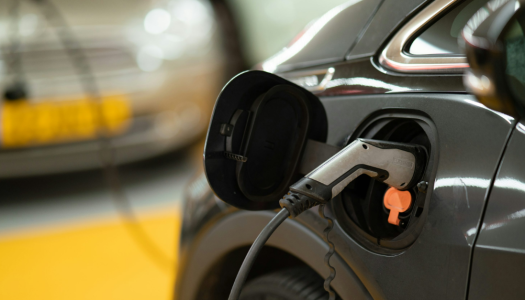Electric vehicle owners could earn big with approval of this new technology
By
- Replies 4
In a world where sustainability and technology are rapidly converging, Australian electric vehicle (EV) owners are at the forefront of an exciting revolution that promises both environmental and financial benefits.
In a move that underscores the nation's commitment to renewable energy and innovative solutions, the Australian government announced a significant development that could see EV owners earning money from the comfort of their homes.
Standards Australia, the nation's peak non-government standards organisation, has officially approved a new vehicle-to-grid (V2G) technology standard.
This groundbreaking technology is not just a step towards a greener future; it's a potential game-changer for the EV industry and EV owners' pockets.
V2G technology is a transformative concept that allows EV owners to feed electricity back into the power grid from their car's battery.
Imagine your car, parked and unused in your driveway, serving as a mini power station, contributing to the community's energy needs and, in return, padding your wallet.
Toby Hagon, an EV expert, shared the potential impact of this technology.
'Most cars are parked for 23 hours a day...and there's a huge amount of energy being stored in those electric vehicles,' he said.
He noted that the average EV could power a house for several days.
This is not just about energy efficiency; it's about energy empowerment.
For those who have embraced solar energy, V2G could be akin to 'free money.'
By charging your EV with solar power, you're harnessing the sun's energy at no cost.
Then, by feeding this energy back into the grid when demand is high and recharging your car during off-peak times or when your solar panels are at their peak production, you're effectively turning your EV into a profitable energy resource.
But how much can you earn from using V2G technology? According to Hagon, the financial benefits vary.
For instance, if you can contribute 30 kilowatt-hours a day back to the grid, you could earn more than $5 per day.
This could add up to over $1,000 a year.
However, it's important to note that individual results will differ based on factors such as how much you use your EV and the specific buy-back schemes offered by energy companies.
The financial prospects for fleet operators are even more enticing.
By utilising V2G technology across multiple vehicles and understanding the intricacies of the energy system, including the Frequency Control Ancillary Services (FCAS) used by the energy market operator to maintain grid stability, fleet operators could see a payday of up to $12,000.
This is not just a win for EV owners but for the environment and the energy grid.
Turning EVs into mobile energy solutions can reduce reliance on fossil fuels, stabilise the grid during peak times, and create a more resilient energy ecosystem.
 Are you an EV owner who's excited about the prospects of V2G? Or are you considering purchasing an EV, and this news has piqued your interest? Share your opinions and experiences in the comments below.
Are you an EV owner who's excited about the prospects of V2G? Or are you considering purchasing an EV, and this news has piqued your interest? Share your opinions and experiences in the comments below.
In a move that underscores the nation's commitment to renewable energy and innovative solutions, the Australian government announced a significant development that could see EV owners earning money from the comfort of their homes.
Standards Australia, the nation's peak non-government standards organisation, has officially approved a new vehicle-to-grid (V2G) technology standard.
This groundbreaking technology is not just a step towards a greener future; it's a potential game-changer for the EV industry and EV owners' pockets.
V2G technology is a transformative concept that allows EV owners to feed electricity back into the power grid from their car's battery.
Imagine your car, parked and unused in your driveway, serving as a mini power station, contributing to the community's energy needs and, in return, padding your wallet.
Toby Hagon, an EV expert, shared the potential impact of this technology.
'Most cars are parked for 23 hours a day...and there's a huge amount of energy being stored in those electric vehicles,' he said.
He noted that the average EV could power a house for several days.
This is not just about energy efficiency; it's about energy empowerment.
For those who have embraced solar energy, V2G could be akin to 'free money.'
By charging your EV with solar power, you're harnessing the sun's energy at no cost.
Then, by feeding this energy back into the grid when demand is high and recharging your car during off-peak times or when your solar panels are at their peak production, you're effectively turning your EV into a profitable energy resource.
But how much can you earn from using V2G technology? According to Hagon, the financial benefits vary.
For instance, if you can contribute 30 kilowatt-hours a day back to the grid, you could earn more than $5 per day.
This could add up to over $1,000 a year.
However, it's important to note that individual results will differ based on factors such as how much you use your EV and the specific buy-back schemes offered by energy companies.
The financial prospects for fleet operators are even more enticing.
By utilising V2G technology across multiple vehicles and understanding the intricacies of the energy system, including the Frequency Control Ancillary Services (FCAS) used by the energy market operator to maintain grid stability, fleet operators could see a payday of up to $12,000.
This is not just a win for EV owners but for the environment and the energy grid.
Turning EVs into mobile energy solutions can reduce reliance on fossil fuels, stabilise the grid during peak times, and create a more resilient energy ecosystem.
Key Takeaways
- Australian EV owners could potentially make money from their cars with the approval of new V2G technology by Standards Australia.
- V2G technology allows EV owners to feed electricity into the grid, possibly earning significant payments.
- The money that can be made varies depending on the EV's battery capacity and usage, with potential annual earnings of over $1,000.
- Using V2G technology could result in even larger earnings for fleet operators, particularly with the savvy use of energy market systems like FCAS.








